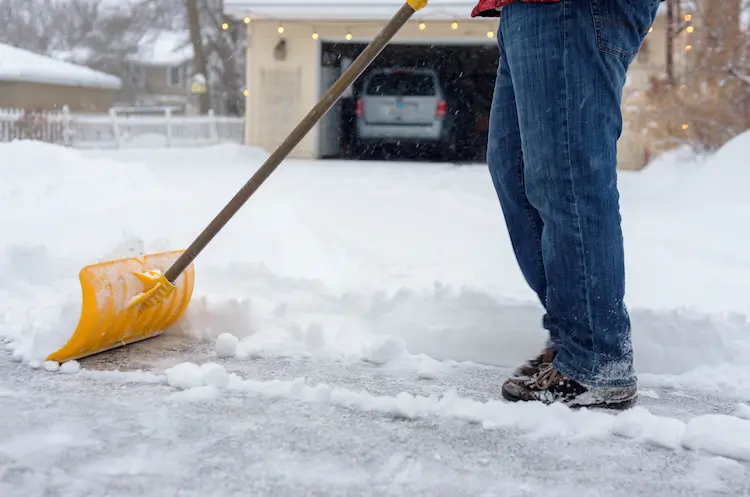If you want to keep your asphalt paving looking smooth and sturdy, then you’ve come to the right place.
In this article, we’ll show you the best techniques for maintaining your asphalt. From regular cleaning to patching damaged areas, we’ve got you covered.
Don’t let cracks and potholes ruin your pavement. With our simple tips, you can prevent water damage, address spills, and even handle snow and ice removal.
Get ready to give your asphalt the TLC it deserves.
Key Takeaways
- Regular cleaning is essential to remove debris and prevent the buildup of dirt and grime on the surface.
- Promptly address cracks and potholes to prevent further deterioration and damage.
- Apply a sealcoat every 2-3 years to provide a protective layer against UV rays, water, oil, and other substances.
- Regularly inspect the asphalt for signs of erosion, maintain proper drainage, and prevent water damage.
Regular Cleaning
To keep your asphalt paving in good condition, you should regularly clean it using a broom and hose.
Regular cleaning is essential to remove debris and prevent the buildup of dirt and grime on the surface.
Start by sweeping the pavement with a broom to remove loose dirt, leaves, and other debris. This will help prevent them from getting stuck in the asphalt and causing damage.
Next, use a hose with a spray nozzle or consider power washing to thoroughly clean the surface. Power washing can be especially effective in removing stubborn stains and dirt that may have accumulated over time.
Filling Cracks and Potholes
To fill cracks and potholes in your asphalt paving, you’ll need to assess the damage and determine the appropriate repair method.
Crack sealing is the process of filling small cracks in the pavement to prevent water penetration, which can lead to further damage. This is done by using a specialized crack sealant that’s applied to the crack, creating a waterproof barrier.
Pothole repair, on the other hand, involves fixing larger holes in the pavement caused by the deterioration of the asphalt. This is typically done by removing the damaged area and replacing it with new asphalt.
It’s important to address cracks and potholes promptly to prevent further deterioration and maintain the integrity of your asphalt paving.
Sealcoating the Surface
Apply a sealcoat to protect the surface of your asphalt paving. Sealcoating is an essential step in maintaining your asphalt and extending its lifespan. Here are four key points to consider when it comes to sealcoating:
- Benefits of sealcoating:
- Sealcoating provides a protective layer that shields your asphalt from the harmful effects of UV rays, water, oil, and other substances.
- It helps prevent cracks, potholes, and the gradual deterioration of your pavement.
- Additionally, sealcoating enhances the appearance of your asphalt, giving it a fresh, clean look.
- Types of sealcoating materials:
- There are two primary types of sealcoating materials: coal tar-based and asphalt-based.
- Coal tar-based sealers are more durable and provide better resistance to chemicals and oil.
- On the other hand, asphalt-based sealers are more environmentally friendly and offer superior flexibility.
- Application process:
- Before applying the sealcoat, clean the surface thoroughly to remove any dirt, debris, or loose asphalt.
- Fill any cracks or potholes and allow them to dry.
- Apply the sealcoat evenly using a squeegee or spray equipment, ensuring complete coverage.
- Allow the sealcoat to dry completely before opening the pavement to traffic.
- Sealcoating frequency:
- It’s recommended to apply a sealcoat every 2-3 years, depending on the amount of traffic and weather conditions.
- Regular sealcoating helps maintain the integrity of your asphalt and prevents costly repairs in the long run.
Patching Damaged Areas
After sealcoating the surface of your asphalt paving, you can address any damaged areas by patching them to maintain the integrity of your pavement. Patching techniques are crucial in preventing further deterioration and extending the lifespan of your asphalt.
There are two common patching methods: cold patching and hot patching. Cold patching involves using pre-mixed asphalt that can be applied directly to the damaged area. This technique is quick and easy, but it may not provide a long-lasting solution.
On the other hand, hot patching involves heating the asphalt mix and compacting it onto the damaged area. This method ensures better adhesion and durability.
To further enhance the longevity of your patched areas, consider implementing preventive measures such as regular inspections, timely repairs, and proper drainage maintenance.
Preventing Water Damage
To prevent water damage, regularly inspect your asphalt paving, make timely repairs, and maintain proper drainage. Water can be a major threat to the durability and longevity of your asphalt pavement. Here are four important steps to prevent water damage:
- Inspect your asphalt regularly: Look for signs of erosion, such as cracks, potholes, or standing water. Address these issues promptly to prevent further damage.
- Repair damaged areas: Fill cracks and potholes with asphalt patching material to prevent water from seeping into the pavement’s base layers.
- Maintain proper drainage: Ensure that your pavement has adequate slope and drainage systems in place to redirect water away from the surface. Consider installing French drains or catch basins if necessary.
- Clean and clear the pavement: Remove debris and leaves regularly to prevent clogged drains and standing water.
Regular Inspections and Maintenance
Regularly inspect your asphalt paving to identify any signs of damage or deterioration. By conducting routine inspections, you can catch potential issues early and take appropriate actions to prevent further damage. Inspections should focus on areas prone to wear and tear, such as cracks, potholes, and uneven surfaces. Additionally, it is important to assess the condition of the asphalt’s surface to prevent oxidation and reduce the impact of traffic. To assist you in your inspections, use the following table as a guide:
| Signs of Damage or Deterioration | Actions to Take |
|---|---|
| Cracks | Seal or fill |
| Potholes | Patch or repair |
| Uneven surfaces | Resurface |
Regular inspections allow you to address issues promptly, ensuring the longevity and durability of your asphalt paving. By preventing oxidation and reducing traffic impact, you can maintain a smooth and safe driving surface.
Addressing Oil and Chemical Spills
Inspect your asphalt paving regularly to identify any oil or chemical spills that may have occurred. Promptly addressing these spills is crucial to maintaining the integrity and longevity of your pavement. Here are four essential steps to effectively handle oil and chemical spills:
- Containment: Immediately block off the affected area to prevent the spill from spreading further. Use absorbent materials like clay or cat litter to soak up the spill and contain it within a designated area.
- Cleaning: Dispose of the absorbed spill according to local regulations. Use appropriate cleaning techniques, such as pressure washing or scrubbing with detergent, to remove any remaining residue from the pavement.
- Repair: Inspect the affected area for any damage caused by the spill. If necessary, repair or replace the damaged pavement to ensure a safe and smooth surface.
- Spill prevention: Implement preventive measures to minimize the risk of future spills. This may include installing spill containment systems or providing designated areas for activities that involve oil or chemicals.
Proper Snow and Ice Removal Techniques

When addressing oil and chemical spills on your asphalt paving, it’s important to also consider proper snow and ice removal techniques. Snow and ice can cause damage to your asphalt surface if not removed correctly.
To effectively remove snow and ice, it’s essential to have the right snow removal equipment. This includes snow plows, snow blowers, and shovels. Snow plows are ideal for large areas, while snow blowers are more suitable for smaller spaces. Shovels are useful for clearing walkways and tight corners.
Additionally, instead of using traditional salt, which can be harmful to the environment and your asphalt, consider using salt alternatives. These alternatives, such as calcium magnesium acetate or sand, are safer for your pavement and don’t pose a risk to surrounding plants and water sources.
Proper snow and ice removal techniques will help maintain the longevity and appearance of your asphalt paving.
Conclusion
So, now you know how to maintain asphalt paving.
With regular cleaning, crack filling, sealcoating, and proper snow removal techniques, your asphalt will remain in great shape.
But here’s the irony – despite all these efforts, nature will eventually take its toll.
No matter how well you maintain it, time and weather will gradually wear down your asphalt.
So, while maintenance is crucial, remember that nothing lasts forever.
